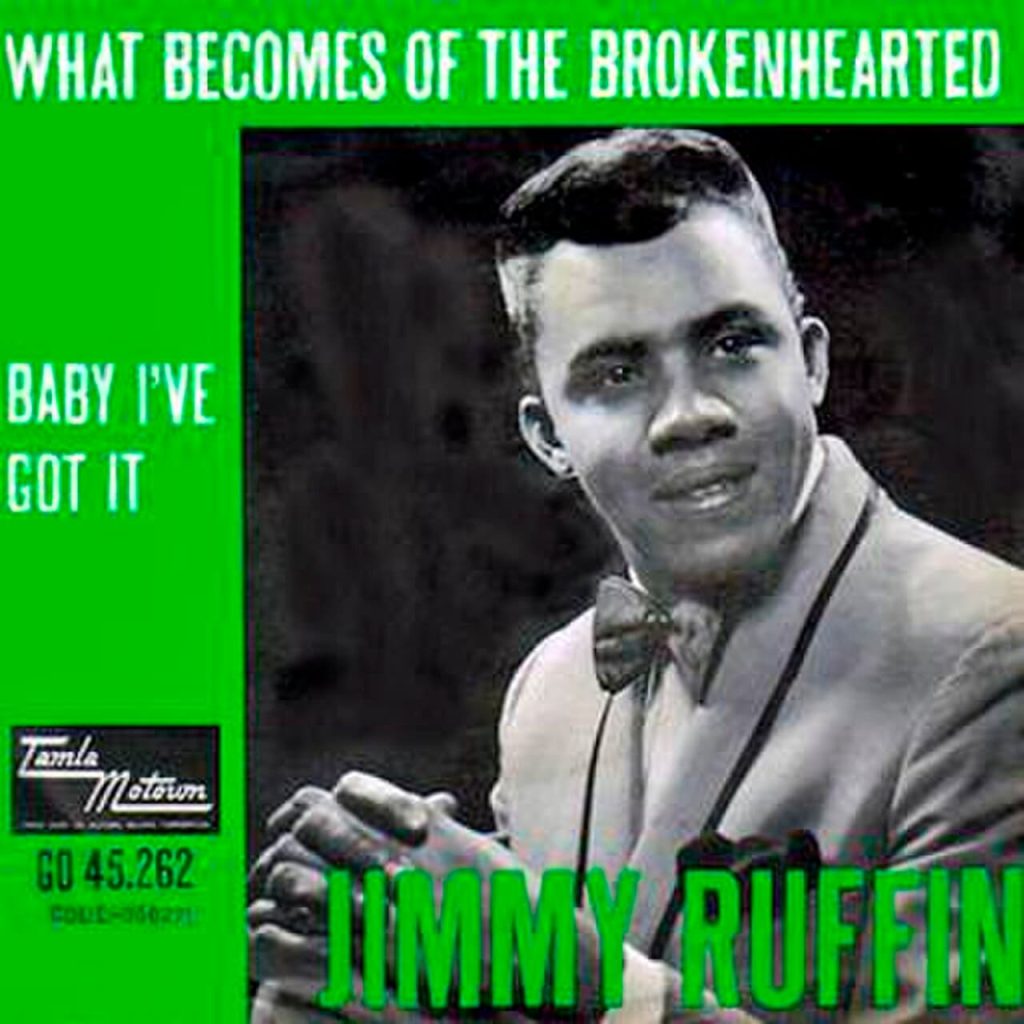
Jimmy Ruffin’s “What Becomes of the Brokenhearted”: A Heartfelt Classic of Soulful Despair
“What Becomes of the Brokenhearted,” released by Jimmy Ruffin in 1966, stands as one of the most poignant soul ballads to ever emerge from the Motown era. Written by the songwriting trio William Weatherspoon, Paul Riser, and James Dean, the song is a deeply emotional exploration of heartbreak and the enduring quest to find solace after a love is lost. As a prime example of the Motown sound, this track’s powerful combination of soulful vocals, lush orchestration, and universal themes of heartache captured the hearts of listeners worldwide.
The song was originally intended for The Spinners, but when Jimmy Ruffin heard the demo, he persuaded Motown to let him record it instead. That decision proved fateful, as “What Becomes of the Brokenhearted” became Ruffin’s signature song and one of the most enduring hits of the 1960s. Upon its release, the song reached No. 7 on the Billboard Hot 100 and climbed to No. 6 on the R&B chart, solidifying Ruffin’s place among the soul greats of his time. It later re-entered the charts in 1974 in the UK, reaching No. 4, and again in 1980, when it was featured in the film Fried Green Tomatoes, proving its lasting appeal.
Musically, “What Becomes of the Brokenhearted” is a masterpiece of the Motown sound. The arrangement is lush, featuring a blend of strings, horns, and a prominent bassline that underscores the song’s deep emotional weight. Ruffin’s voice, gritty and full of raw emotion, perfectly conveys the sense of despair and longing at the heart of the song. His delivery is tender yet powerful, drawing the listener into his world of heartache with each phrase.
The lyrics of “What Becomes of the Brokenhearted” resonate deeply with anyone who has experienced the pain of lost love. The opening line, “As I walk this land of broken dreams,” sets the tone for the song’s exploration of grief and the emotional aftermath of a relationship’s end. The narrator is searching for answers, struggling to make sense of the pain, and wondering if healing is even possible. The repeated refrain, “What becomes of the brokenhearted?” becomes a universal question, one that many listeners can relate to, regardless of their personal circumstances.
The genius of the song lies in its ability to evoke a range of emotions. While it deals with sadness and heartache, it also captures the resilience of the human spirit. The narrator continues his search for peace and love, despite the overwhelming feelings of loss. This duality—pain coupled with the hope for eventual healing—gives the song its depth and emotional complexity. It’s a song that feels both deeply personal and widely relatable, which is why it has remained a favorite for decades.
Jimmy Ruffin was the older brother of David Ruffin, the iconic lead singer of The Temptations, but “What Becomes of the Brokenhearted” allowed Jimmy to step out from his brother’s shadow and establish himself as a solo star. His rich, soulful voice and emotive delivery helped make the song an instant classic, and it remains one of Motown’s most enduring hits.
In addition to its chart success, “What Becomes of the Brokenhearted” has been widely covered by artists from different genres, including Joan Osborne, Robson & Jerome, and Paul Young, who brought the song back into the limelight with his 1991 cover. Each version of the song highlights its timeless appeal and emotional power, but it’s Ruffin’s original recording that continues to resonate the most with audiences.
In summary, “What Becomes of the Brokenhearted” by Jimmy Ruffin is much more than just a hit song from the 1960s—it’s an anthem of lost love and emotional resilience that has stood the test of time. Its combination of heartfelt lyrics, soulful vocals, and a rich musical arrangement make it one of the most iconic ballads in Motown’s legendary catalog. Ruffin’s performance on this track is a masterclass in emotional delivery, and the song’s universal themes ensure its place as a timeless classic in the world of soul music.